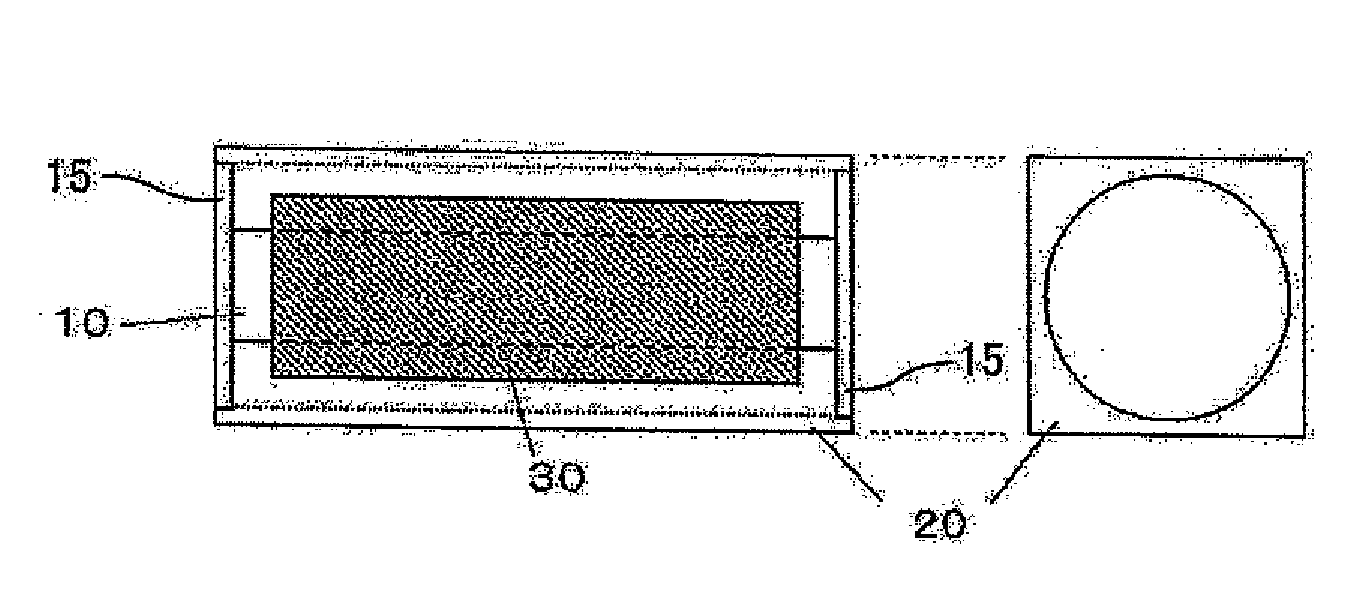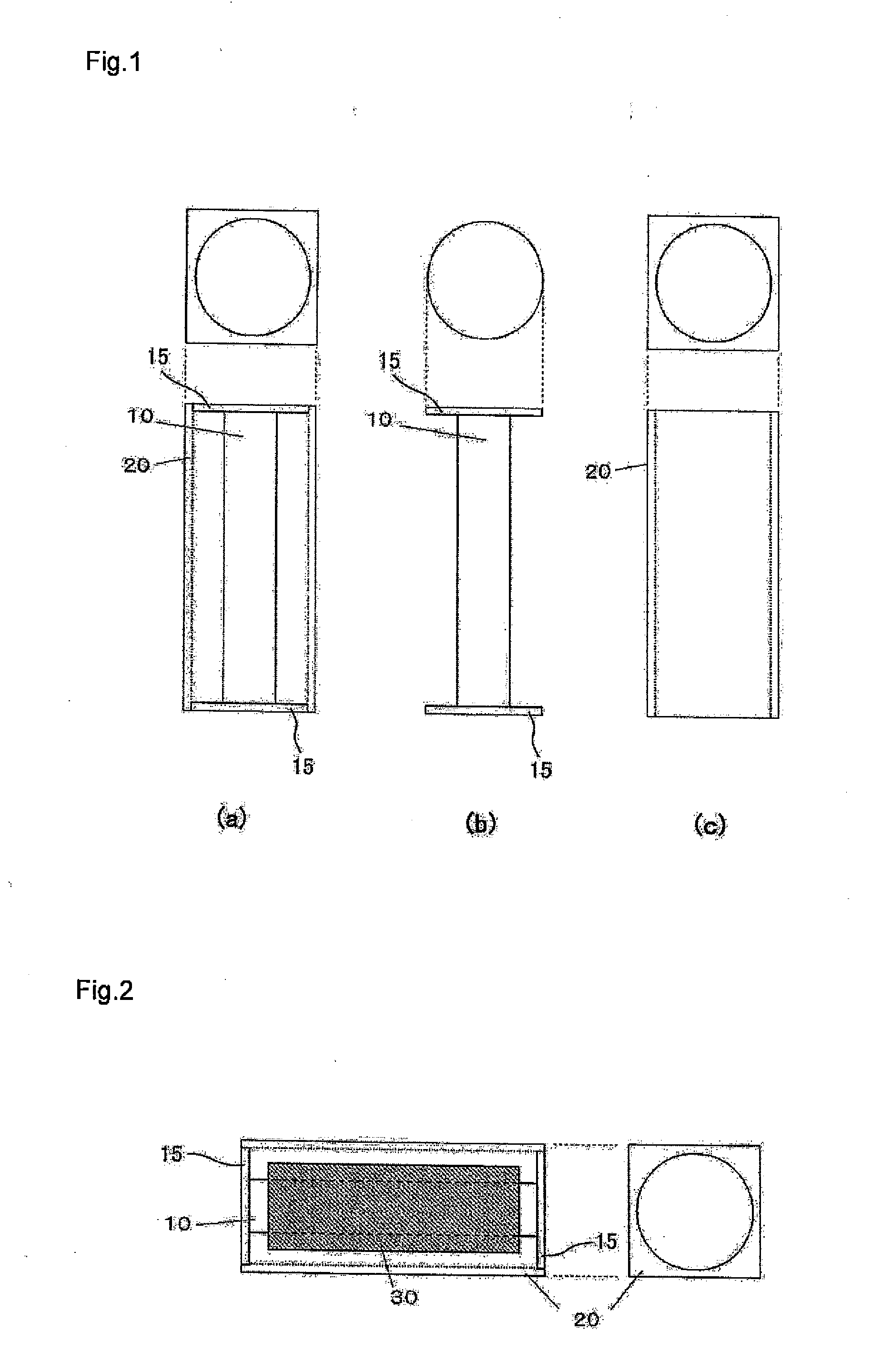Method for manufacturing carbonaceous film, and graphite film obtained thereby
a technology of graphite film and carbonaceous film, which is applied in the direction of carbon preparation/purification, inorganic chemistry, carbon compounds, etc., can solve the problems of inability to achieve advantageous high thermal conductivity, difficulty in allowing polymer graphite film to have a still larger area, etc., and achieves favorable thermal conductivity, high quality, and large area
- Summary
- Abstract
- Description
- Claims
- Application Information
AI Technical Summary
Benefits of technology
Problems solved by technology
Method used
Image
Examples
examples
[0118]Hereinafter, the present invention will be explained in more detail by way of Examples and Comparative Examples. It is to be noted that the flow rate of nitrogen stream in Examples and Comparative Examples indicates the flow rate of nitrogen gas at an ambient pressure, outside the electric furnace.
[0119]
[0120](Fusion)
[0121]Fusion was evaluated as: “a lot present” when fusion occurred in the entirety; “somewhat a lot present” when fusion occurred in the range of at least 20 layers; “present” when fusion occurred in the range of at least 10 layers; “a few present” when fusion occurred in the range of 5 or less layers; “slightly present” when fusion occurred in the range of 3 or less layers; “hardly present” when fusion occurred in the range of 3 or less layers, which were detachable by hand; and “absent” when no fusion occurred.
[0122](Ruffling)
[0123]As shown in FIG. 10, ruffling was evaluated as: “slightly present” when ruffling having a length of 30 mm or less and an amplitude ...
example a1
[0136]As a polymer film, a polyimide film (trade name: Apical 50AH film; thickness: 50 μm) manufactured by Kaneka Corporation, having a width of 250 mm was provided. With reference to FIG. 2, this polymer film was wrapped around a central region of the core 10 of the vessel “a” to give 50 layers, and the core 10 wrapped by the film was placed into the outer casing 20, which was further placed into inner case 55 covered with disc 15 as a lid. Thus provided vessel “a” was transversely situated in an electric furnace as shown in FIG. 8, and the temperature was elevated up to 1,000° C. at a rate of 2° C. / min by electrification and heating with heater 50 provided on the external side of the vessel to execute a carbonization treatment. In the carbonization treatment atmosphere, nitrogen was not allowed to flow, and the temperature elevation was continued while keeping the internal pressure at −0.01 kPa by reducing the pressure with a vacuum pump from pressure reduction opening 70. After c...
example a2
[0138]A carbonaceous film was produced by an entirely similar method to Example A1 using the vessel “a” except that the temperature elevation was continued in the carbonization treatment atmosphere without allowing nitrogen to flow while keeping the internal pressure at −0.1 kPa. The thickness, the surface condition, and the weight per unit area (g / m2), and the thermal diffusivity after the graphitization treatment of the carbonaceous film are summarized in Table 1. The phrase “internal pressure being −0.1 kPa with vacuum pump” herein referred to means that the internal pressure of the electric furnace is lower than the outside pressure of the electric furnace by 0.1 kPa.
PUM
| Property | Measurement | Unit |
|---|---|---|
| pressure | aaaaa | aaaaa |
| temperature | aaaaa | aaaaa |
| thickness | aaaaa | aaaaa |
Abstract
Description
Claims
Application Information
 Login to View More
Login to View More - R&D
- Intellectual Property
- Life Sciences
- Materials
- Tech Scout
- Unparalleled Data Quality
- Higher Quality Content
- 60% Fewer Hallucinations
Browse by: Latest US Patents, China's latest patents, Technical Efficacy Thesaurus, Application Domain, Technology Topic, Popular Technical Reports.
© 2025 PatSnap. All rights reserved.Legal|Privacy policy|Modern Slavery Act Transparency Statement|Sitemap|About US| Contact US: help@patsnap.com



